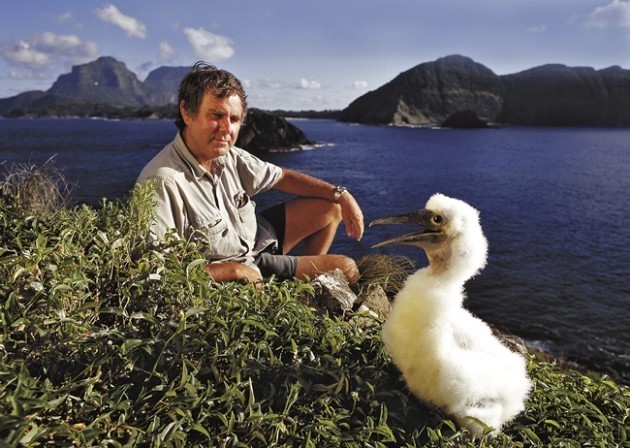Sydney’s iconic cityscape defines its electorate, but few realise the pristine forests and coral reefs of Lord Howe Island are also part of it, or that both are threatened by recent climate change problems. Metropolitan Sydney and Lord Howe Island have experienced unusually hot temperatures and warmer water currents than usual, damaging and relocating marine life in events that predict less biodiversity in our future if there is no significant change.
“The natural environment is of prime concern,” said Sarah Shields at the Lord Howe Island Tourism Association. “It’s been a marine park for over 100 years, and it is also home to the world’s southernmost coral reef. You get these vibrant corals, fish and turtles.”
Future effects of climate change are something to be concerned about she says.
Public concern for climate change is steadily increasing with a recent Lowy Institute poll showing almost 60 per cent of respondents believe climate change is serious and action should be taken despite high costs. Environmental policies will be important determinants as the election nears and Sydneysiders have been shown to be progressive and environmentally aware in previous elections. Many might be surprised, though, by mounting environmental problems that exist in their home electorate.
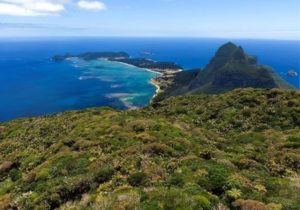
Historic Goat Island and tiny Fort Denison, both visible from the Sydney Harbour Bridge, are the two other freestanding islands allocated to the Sydney electorate. To visit the third, Lord Howe Island, requires a two-hour plane flight across the Tasman Sea to a small green speck over 700 km away between Australia and New Zealand.
Scientists from around the globe visit Lord Howe Island to study its unique biodiversity which has flourished in a remote location assisted by being one of the last islands in the world to be discovered by humans. Henry Lidgbird Ball, commander of the First Fleet ship Supply, spotted it in 1788 while sailing from Sydney Cove to the penal settlement at Norfolk Island, and named it after British Admiral Richard Howe.
It remained uninhabited until 1834, when three couples arrived from New Zealand, and little has changed since with 75 per cent an untouched conservation area.
“There are around 350 residents on the island and then there’s a limit of 400 people and visitors that are here at one time,” said Ms Shields. “The island never feels crowded.”
But the thin, crescent-shaped volcanic remnant, which is the length of a good hike at only 11 km, is under threat.
Climate change is now damaging pockets of critically endangered forests and coral reefs on the island generating concern in the scientific community who want to educate people about what could be lost. UNESCO granted the island World Heritage status in 1982 due to its unique biodiversity, including 90 coral species used to cooler temperatures, many of which are endemic.
Its marine fauna includes over 500 fish species, with nine found nowhere else in the world, including the almost luminous blue-grey Lord Howe Double-Header Wrasse, named for its bulging forehead, with sharp protruding teeth used to pry open shells.
Almost half of Lord Howe Island’s indigenous plants are only found on the island and it is a birdwatcher’s paradise with more seabird species breeding and floating on wind currents around its two tall peaks than anywhere else in Australia.
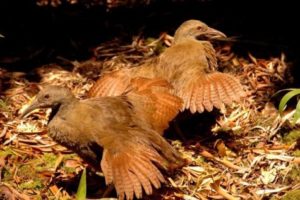
Two thirds of its insects are unique to the island, adding to an extraordinary list of wonders, and a 12 cm long stick insect thought to be extinct was rediscovered tenaciously surviving on a volcanic outcrop off the coast. This meant the world’s rarest insect was found, in a single bush poking out of a small crevice, on the world’s tallest reputed volcanic stack at 550 metres high.
Ian Hutton, a scientist and naturalist, went to Lord Howe Island in 1980 for a two-year posting and is still there today. “The island just had everything – rainforest clad mountains, coral reef, seabird colonies, and a small caring community,” he said.
Mr Hutton can leave his front door and go for a walk where he “can enjoy the mysterious coal age forest clad with mosses, ferns and orchids” or, if the mood takes him, “enjoy snorkelling in the pristine waters of the Lagoon with a dazzling realm of coral and fish”.
Climate change is damaging his island paradise though. Mr Hutton said that with less rainfall and cloud cover on the island’s summits he has seen quite a number of dead tree fern and other plants. “I have never seen this before on trips over the past 40 years. If this persists critically endangered plant life will be lost.”
Warm ocean water moved into the Tasman Sea in January and combined with calm days and clear skies to bleach corals in some areas of the sheltered lagoon. After snorkelling around the lagoon to examine the reef, Mr Hutton found shallow water corals most affected. “The North Bay area showed about 40 per cent bleaching and Sylph’s Hole 90 per cent bleaching. Deeper water areas were only mildly affected,” he said.
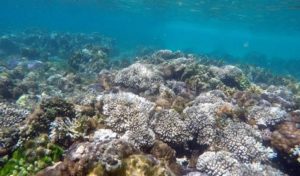
Dr Ziggy Marzinelli, at the University of Sydney, said corals are generally able to recover after a month or so under improved conditions. “It has to do with the intensity and mostly the duration of the temperature stress.”
Fortunately, cooler water and weather around the island means Lord Howe Island’s corals are expected to recover.
Dr Marzinelli also observed that the effects of climate change can be seen around the world and in future the marine environment will look different, and be less variable, but scientists are researching management and protection plans. This expected transformation of some areas from a marine “forest to a desert” is a red flag for environmentally concerned voters.
Climate change is transforming marine life closer to home in the Sydney electorate as well.
Marine biologist, Daniel Swadling, says fish species termed “tropical vagrants” are being washed down in the east Australian current to Sydney Harbour.
“Generally, they would die off once winter starts because the water becomes too cold for them to live, and with warm water occurring year-round we’re actually starting to see them settle and live out their lives.”
A searing blanket of oppressive heat sat over Sydney for most of last summer heralding the transforming power of climate change in a way not seen before, with Metropolitan Sydney and Lord Howe Island experiencing their warmest and driest summer on record. On January 7 Observatory Hill in Sydney reported a record 43.4 degrees Celsius, and on February 13 Lord Howe Island had its hottest day at 29.9 degrees according to the Bureau of Meteorology. Environmental changes caused by this anomaly have alerted people to the risks of disregarding worrying signs, and in an electorate that has always had a green leaning this may play out at the polls.
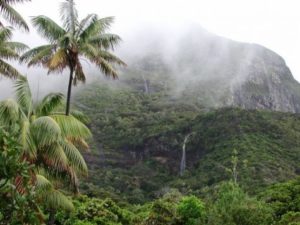
Tanya Plibersek, the incumbent MP for Sydney, recognised The Green party’s popularity and voters’ environmental conscience, in her 2018 McKell Institute speech saying, “losing a few seats to the Greens could be the difference between Labor or the Coalition forming government”.
Sylvie Ellsmore of The Greens gained over 19 per cent of first preference votes in the 2016 election to come a comfortable third to Ms Plibersek’s nearly 44 per cent, with the Liberals a confident second.
In comparison to the whole electorate, when Lord Howe Islanders attended the polling booths in the last election nearly 53 per cent voted for Ms Plibersek, and votes for Liberal candidate Geoffrey Winters were higher than the electorate’s average at nearly 34 per cent, but votes for the Greens were lower at almost 8 per cent.
At first glance the Greens result at Lord Howe might seem surprising, notwithstanding electoral issues being grounded in more than a party’s name, until the island’s associations with the Federal Government and Port Macquarie are considered. As befitting an island of immense ecological value, its interests are looked after beyond the scope of its federal electoral division of Sydney. It is governed by the Lord Howe Island Board that is responsible to the NSW Minister for the Environment.
Leslie Williams, State MP for Port Macquarie and member of the National Party, in her 2011 inaugural speech said the island, that resides at the same latitude but 600 km offshore, was: “a community whose issues are so unique and so broad that the Premier has responded appropriately and on being elected transferred responsibility for it to his own office.”
Ms Williams explained Lord Howe Island’s relationship with Port Macquarie last week pointing to a Memorandum of Understanding between Port Macquarie Hastings Council and the Lord Howe Island Board. “I treat it the same as any other community in my electorate and I’m aware of the island’s plan to use renewable energy, for which they received a grant for solar panels.” The island’s welfare, this shows, transcends regular political boundaries.
Who Sydneysiders, and Lord Howe Islanders, will trust with their vote come May 18 is still being decided, but with alarming examples of climate change occurring in their ‘backyard’, they will clearly be voting on their sustainable future. Most scientists agree there must be global action by all governments to reduce carbon emissions, particularly by reducing the use of fossil fuels and increasing sustainable energy production, and political parties are beginning to take note.
Hope for collective change grows as the parties refine their policy commitments, influenced by a constituency gaining a better understanding of the problem. Lord Howe Island’s treasure trove of irreplaceable biodiversity provides the perfect inspiration.

